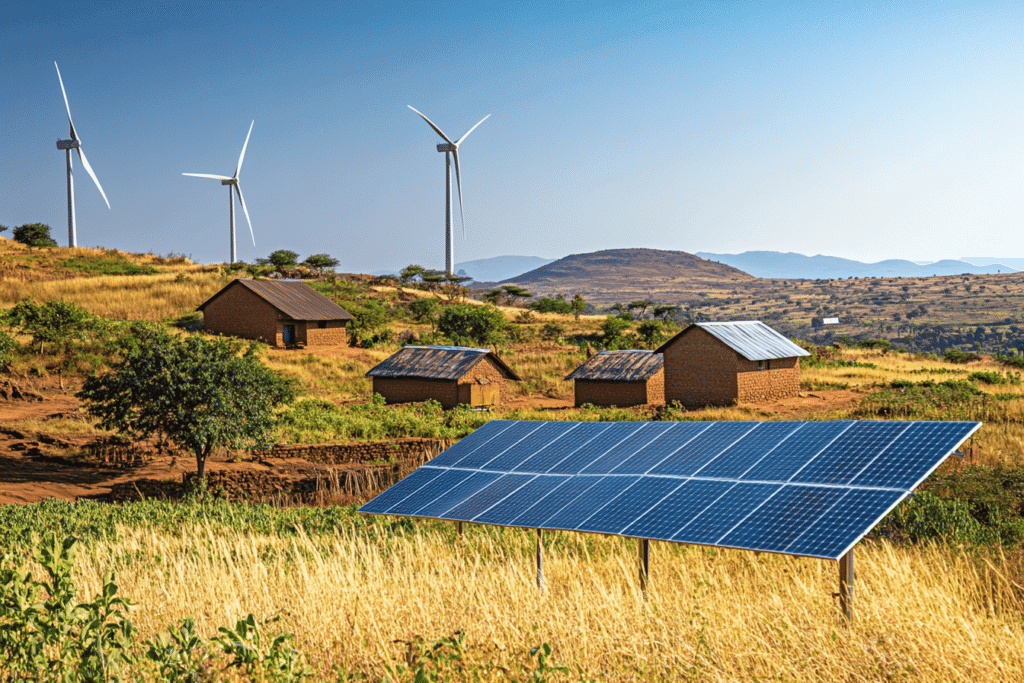Technological innovations are bringing a new breath of life to solar energy production and paving the way for an unprecedented energy revolution. Next-generation solar panels are emerging as essential players in the transition to sustainable energy sources. By integrating cutting-edge systems such as hybrid, bifacial, and perovskite panels, these technologies not only improve yields but also reduce installation and operating costs.
Imagine a world where your home produces clean energy while reducing bills and your carbon footprint. Thanks to remarkable advancements, from high-performance photovoltaic cells to integrated thermal management devices, it is now possible to further optimize your energy production. These innovations represent not just economic choices but a genuine commitment to a sustainable future. In this article, let’s dive into the latest technologies available and discover how they can transform your approach to solar energy, thereby boosting your energy independence and your contribution to preserving our planet.

The world of green energy is evolving at a breakneck speed, and next-generation solar panels are at the heart of this revolution. Each technological advance not only enhances the efficiency of existing systems but also transforms our approach to energy production. Whether you are an individual looking to reduce your energy bills or a business transitioning to sustainable practices, these innovations can profoundly change your daily life.
Breathtaking statistics and their impact on the energy transition
The latest studies regarding photovoltaic technology reveal impressive figures. According to LCP Delta, by 2030, nearly 1,800,000 homes in France could be equipped with solar panels. This represents an incredible opportunity for households and businesses aiming to reduce their carbon footprint. Indeed, over 80% of the population is now aware of the benefits of solar energy, and this figure continues to rise thanks to effective awareness campaigns and government incentives.
An especially revealing case study comes from an initiative in California where a residential complex integrated bifacial solar panels. These panels, which capture sunlight from both sides, led to an increase of nearly 30% in their energy production compared to traditional panels. Such projects demonstrate how innovation can boost efficiency while providing a significant return on investment for homeowners.
Moreover, the implementation of integrated ventilation systems in next-generation solar panels allows for the harnessing of up to 80% of the generated energy. This enables you to distribute warm air in your living space while reducing heating costs. To maximize your return on investment, it is therefore essential to stay informed about technological advancements.
Innovations redefining the future of solar panels
One of the most promising breakthroughs comes from perovskite solar panels. Replacing silicon in photovoltaic cells, these new materials allow for higher energy yields with reduced production costs. Currently, research is focused on panels that could exceed 30% efficiency, radically transforming our approach to energy consumption. This technology is still in its infancy, but the potential impacts on the industry are enormous.
Quels sont les meilleurs panneaux solaires en 2024 : découvrez notre guide complet https://t.co/DOpGR4oVzo pic.twitter.com/uo5UdVe5Lk
— Le Journal du Geek (@JournalDuGeek) April 12, 2024
In the same breath, we have hybrid panels like the Dualsun SPRING, which produce both electricity and heat. This innovative system uses the heat generated by the photovoltaic process for water or ambient air heating. With a yield 2 to 4 times higher than standard panels, these hybrid solutions are particularly attractive for households looking to maximize their energy production capacity.
Finally, the Solar Energy Booster is an innovation that deserves your attention. By lowering the temperature of the panels by up to 70 degrees in summer, it increases electrical efficiency by over 25%. By integrating such a system into your installation, you can optimize your energy production, especially during the summer months or in cases of strong solar irradiation.
Practical strategies for integrating next-generation solar panels into your project
If you are considering making the leap to next-generation solar panels, here are some practical recommendations to maximize your energy production:
- Assessment of energy needs: Before choosing a technology, start by evaluating your energy needs. The size of your installation must be proportional to your consumption to fully benefit from the system.
- Researching grants and aid: Find out about available subsidies for installing solar panels. Many governments and organizations offer grants that can lessen the initial cost of your project.
- Integration of smart systems: The future is automation. Integrating intelligent energy management systems can optimize the use of produced energy, based on your consumption habits.
- Energy storage methods: Investing in storage batteries will allow you to maximize the use of your solar energy, especially at night or on overcast days.
Finally, keep in mind that every innovation comes with a learning curve. Do not shy away at the first obstacle, but rather look for temporary solutions while planning your transition to a sustainable energy future.
To explore in more detail the latest technologies and solutions around solar panels and photovoltaics, consult resources like EDF ENR, as well as dedicated guides to energy transition.

Next-Generation Solar Panels: FAQ
What are the advantages of next-generation solar panels? These panels are designed to maximize energy efficiency, reduce installation costs, and improve our energy independence.
How do hybrid solar panels work? Hybrid panels, like the Dualsun SPRING, produce electricity at the front and heat at the back, thereby increasing energy yield by 2 to 4 times compared to traditional panels.
What technological innovations can we expect in 2024? Trends include perovskite-based solar panels, integrated ventilation systems, and bifacial panels that capture light from both sides.
How many homes could be equipped with solar panels by 2030? According to forecasts, nearly 1,800,000 homes could be equipped with these advanced technologies.
What materials are used in the manufacture of next-generation solar panels? The new panels include materials such as perovskite and organic cells that replace traditional silicon cells.
What is the maximum expected efficiency of silicon solar panels? The goal is to exceed 25% efficiency, with long-term ambitions of reaching over 30%.
How do new technologies improve energy self-consumption? Through the optimization of storage systems and the integration of hybrid panels, self-consumption becomes more efficient and sustainable.
What is the environmental impact of next-generation solar panels? These panels contribute to reducing carbon footprints by promoting the use of renewable energies and decreasing dependence on fossil energy sources.
“`
Articles similaires
Thank you!
We will contact you soon.














